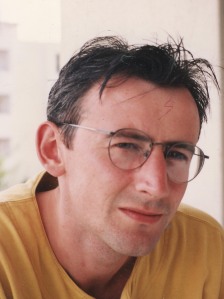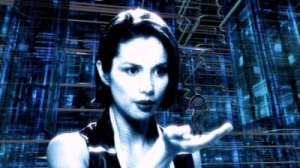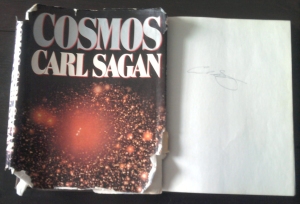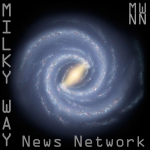 Most of the entries in this series of things that have impacted on the Johnny Mackintosh books have been either science fiction or science based. I have though saved the biggest influence until last and it comes from another world, but one which many readers will know well: Jo Rowling’s spectacular creation, Harry Potter.
Most of the entries in this series of things that have impacted on the Johnny Mackintosh books have been either science fiction or science based. I have though saved the biggest influence until last and it comes from another world, but one which many readers will know well: Jo Rowling’s spectacular creation, Harry Potter.
Some people might have heard the story of how I came to begin reading about the boy wizard from Godric’s Hollow, but for those who haven’t here goes. Of course as a publisher I’d heard about Harry and his creator JK Rowling, but I figured he was for kids and I had no interest whatsoever in books about witches and wizards and magic and broomsticks, even though the buzz about this remarkable creation wouldn’t go away.
I was working for a company called Addison-Wesle y who were based in Boston, Massachusetts, so had been spending time over there. At the end of the week everyone from the office was out a party in a club (I think the House of Blues) and I would be heading back to the UK the next day. I was approached be someone looking a little sheepish who said she had something to tell me – that everyone in the office thought I was Harry Potter.
y who were based in Boston, Massachusetts, so had been spending time over there. At the end of the week everyone from the office was out a party in a club (I think the House of Blues) and I would be heading back to the UK the next day. I was approached be someone looking a little sheepish who said she had something to tell me – that everyone in the office thought I was Harry Potter.
In hindsight it’s obvious. At the time, as you can see, I wore ridiculous round battered glasses, had black messed up hair, spoke with an English accent and (though I normally cover it under mounds of foundation) I do actually have a lightning-shaped scar on my forehead. Then there are all the mad things that seem to happen when I get angry, but that’s another story…
The next day I found and bought Harry Potter and the Sorcerer’s Stone at Logan International Airport and read it on the flight home. Curiously, although I may have read all the Harry Potter books 20-40 times, I’ve still never read the Philosopher’s Stone version of book one where it all began. At that time Harry Potter and the Chamber of Secrets was also published so I bought that at Heathrow Airport on the way home, and Prisoner of Azkaban soon followed. I loved this world that the woman who was to become my writing idol had created. It’s a tribute to her that she could even make things like magic and dragons and Quidditch sound interesting. But most of all it was what we call the voice of the books, and the cleverness of telling everything from Harry’s point of view, even when he got the wrong end of the stick.
 It had never occurred to me to write the sort of books that children might want to read (as well as adults). I’d been trying to pen the ultimate cutting edge modern novel, a kind of cross between Iain Banks, Paul Auster, Tibor Fisher and Irvine Welsh (there’s a thought!) when one day, walking back from the writing class I’d been going to it hit me like a sledgehammer. Although I enjoyed reading authors like those four listed, there was nothing I loved reading more than Harry Potter. Just as it was books from my childhood that had left further, indelible marks on me. And that I felt that about Harry despite, not because of, the subject matter. How much better it might be if I could write the same sort of story, but replacing magic with science, and having aliens instead of goblins and house elves, and football instead of Quidditch, and pack it with fun gadgets and computers.
It had never occurred to me to write the sort of books that children might want to read (as well as adults). I’d been trying to pen the ultimate cutting edge modern novel, a kind of cross between Iain Banks, Paul Auster, Tibor Fisher and Irvine Welsh (there’s a thought!) when one day, walking back from the writing class I’d been going to it hit me like a sledgehammer. Although I enjoyed reading authors like those four listed, there was nothing I loved reading more than Harry Potter. Just as it was books from my childhood that had left further, indelible marks on me. And that I felt that about Harry despite, not because of, the subject matter. How much better it might be if I could write the same sort of story, but replacing magic with science, and having aliens instead of goblins and house elves, and football instead of Quidditch, and pack it with fun gadgets and computers.
I began writing Johnny Mackintosh and the Spirit of London. The other novels I’d tried to create had all been hard work – this was like reading my all-time favourite book, but it was up to me how it developed. It flowed so well. And, many twists and turns later, it’s remarkable that the third in my own series publishes tomorrow.
I have no doubt that Jo Rowling is the greatest writer and storyteller of her (my) generation and seriously underrated. I suspect a lot of it is due to jealousy of her success. Whenever I read other books aimed at the same market, often by lauded authors, I find myself picking holes in their writing and technique, but I can’t find fault with the writing behind Harry Potter. When I was first working on the Johnny Mackintosh stories I would actually read the Harry Potter books in a continuous loop to remind myself of the incredible voice I was trying to find. If a new book was coming out I might have to pause my own writing for a while so I could time it perfectly to finish, say, Goblet of Fire, the day before Order of Phoenix came out so I could carry straight on into the new book.
Sound a little obsessive? Maybe, but I am Harry Potter’s number one fan and don’t let anyone tell you different. In fact, here’s a Harry Potter Quiz I once wrote for the Sunday Telegraph magazine, just before The Deathly Hallows came out. They asked me to create something ungooglable. They also wanted me to include a fair amount of film stuff (as they didn’t realize fans cared about the last book being released, not the fifth film). Also, they wanted multiple choice and so I gave five answers to each question, but the final piece was printed with only four possibilities, so not all the questions work as intended. But I’m still proud of it. The STEWS setting was my idea too.
When I pitched the Johnny Mackintosh books to agents and publishers the 10 second sell I began with was “Harry Potter in space” (or sometimes “Harry Potter meets Star Wars in case they thought at this stage that Harry Potter alone hadn’t made enough money). People who know me will know that dreams are a big part of my life and I suspect the same is probably true of JKR, because of the way she weaves Harry’s into the stories. I’ve done the same. The best bit about the Potter books is the way so many clues are hidden in plain sight. It’s wonderful trying to spot them – for instance, Chamber of Secrets is particularly packed full of clues that point to events into the far future, even including books six and seven. I’ve tried to do the same. Up until about draft 30 of Spirit of London (yes you read that right) I think my setting for Johnny was too similar to that of Harry’s, in that I had my own hero living with foster parents. Then, after a year of rewriting and plotting, I came up with the idea of Halader House and the children’s home in which my story begins.
I could wax lyrical about the boy who lived for days/weeks/months, but I’m sure you get the idea. Tomorrow my third book will be published and it’s a huge thank you to Jo Rowling for helping that happen. And now I might just pop out and see if I can buy a copy of and then start on a book I’ve still never read: Harry Potter and the Philosopher’s Stone.
 One of the great things about books is how long they last. We’re still able to read stories from thousands of years ago, many of them being continually remade as films or television stories. One book that made a lasting impression on me as a child was something that was written over a century ago:
One of the great things about books is how long they last. We’re still able to read stories from thousands of years ago, many of them being continually remade as films or television stories. One book that made a lasting impression on me as a child was something that was written over a century ago:  What was great about the stories was how the children affected time through their travels. For instance, I think when they were being held prisoner in ancient Babylon they showed their prison guard a twopence piece and that was apparently how the Bablyonians came upon the idea of a minted coinage/currency.
What was great about the stories was how the children affected time through their travels. For instance, I think when they were being held prisoner in ancient Babylon they showed their prison guard a twopence piece and that was apparently how the Bablyonians came upon the idea of a minted coinage/currency.
 In these pages I’ve written of how I’ve been fortunate enough to have met Carl Sagan, Iain Banks, Steven Moffat and Brian Cox, but I do which I’d had an encounter with the genius
In these pages I’ve written of how I’ve been fortunate enough to have met Carl Sagan, Iain Banks, Steven Moffat and Brian Cox, but I do which I’d had an encounter with the genius 
 When you’re a writer you have a whole lifetime of experiences to draw upon that can go into your creations. Some things stick with you. When I was fifteen I watched a
When you’re a writer you have a whole lifetime of experiences to draw upon that can go into your creations. Some things stick with you. When I was fifteen I watched a  I presume it’s not just me but many writers who sprinkle their creations with little homages to things they’ve enjoyed or have had an effect on them. The show had a great time travelling story arc where the future affects the past every bit as much as the other way around. After all, it was the great American physicist
I presume it’s not just me but many writers who sprinkle their creations with little homages to things they’ve enjoyed or have had an effect on them. The show had a great time travelling story arc where the future affects the past every bit as much as the other way around. After all, it was the great American physicist  Unless you’ve been living on Mars the past few years, you can’t help but have been sucked into the hype surrounding the reboot of the
Unless you’ve been living on Mars the past few years, you can’t help but have been sucked into the hype surrounding the reboot of the  When I first heard Eccleston was leaving and Tennant was taking over, I was very disappointed – how wrong was I? For me, David Tennant now bestrides the Who universe as the greatest of all Doctors, not least because he so clearly loved the role when it always appeared Eccleston felt a little above it.
When I first heard Eccleston was leaving and Tennant was taking over, I was very disappointed – how wrong was I? For me, David Tennant now bestrides the Who universe as the greatest of all Doctors, not least because he so clearly loved the role when it always appeared Eccleston felt a little above it. Although Russell T Davies was the man who brought Who back onto the small screen, many people would say it was the writing of Steven Moffatt that really stood out. He penned such seminal Tennant episodes as “Blink” and “The Girl in the Fireplace” (pictured). I had a long chat with Moffat, lead writer and executive producer of Dr Who at this year’s Royal Television Society awards – Moffat had won a gong for lifetime achievement while at least I’d been rewarded with a very lovely dinner. We talked for a long time about our shared love of the show and he even said he’d try the Johnny Mackintosh books out on his kids.
Although Russell T Davies was the man who brought Who back onto the small screen, many people would say it was the writing of Steven Moffatt that really stood out. He penned such seminal Tennant episodes as “Blink” and “The Girl in the Fireplace” (pictured). I had a long chat with Moffat, lead writer and executive producer of Dr Who at this year’s Royal Television Society awards – Moffat had won a gong for lifetime achievement while at least I’d been rewarded with a very lovely dinner. We talked for a long time about our shared love of the show and he even said he’d try the Johnny Mackintosh books out on his kids.
 Interestingly, I can’t help feeling that the influence might sometimes have gone the other way. The Piccadilly, one of the Spirit of London’s shuttle craft is in the form of a flying London double-decker bus, something used later on Who in the Easter special episode, “Planet of the Dead”. Then, as we reached the halfway point of the current series there were headless monks dressed in scarlet robes at Demons Run (in the episode “A Good Man Goes to War”). These looked pretty much deadringers for my own (also headless) Owlessan Monks who first appeared in Johnny Mackintosh: Star Blaze and continue through Battle for Earth.
Interestingly, I can’t help feeling that the influence might sometimes have gone the other way. The Piccadilly, one of the Spirit of London’s shuttle craft is in the form of a flying London double-decker bus, something used later on Who in the Easter special episode, “Planet of the Dead”. Then, as we reached the halfway point of the current series there were headless monks dressed in scarlet robes at Demons Run (in the episode “A Good Man Goes to War”). These looked pretty much deadringers for my own (also headless) Owlessan Monks who first appeared in Johnny Mackintosh: Star Blaze and continue through Battle for Earth. For those who don’t know, Blake’s 7 was a British science fiction television series in the late 1970s/early 1980s. At the time I thought it was the greatest TV show anyone could have conceived.
For those who don’t know, Blake’s 7 was a British science fiction television series in the late 1970s/early 1980s. At the time I thought it was the greatest TV show anyone could have conceived. Something goes wrong. The relatively primitive Earth ship (in fact called the London) is damaged, finding itself in the middle of some kind of interstellar war between far more advanced civilizations. And one of the advanced ships is found drifting nearby. A few members of the Federation crew tries to board it but all succumb to a terrible fate so next some of the prisoners were sent over. Blake, now aware of how to prevent tricks being played on his mind is able to overcome the ship’s automatic defences and assume command.
Something goes wrong. The relatively primitive Earth ship (in fact called the London) is damaged, finding itself in the middle of some kind of interstellar war between far more advanced civilizations. And one of the advanced ships is found drifting nearby. A few members of the Federation crew tries to board it but all succumb to a terrible fate so next some of the prisoners were sent over. Blake, now aware of how to prevent tricks being played on his mind is able to overcome the ship’s automatic defences and assume command. with a computer/mind called Zen (pictured with Blake) and when Zen spoke the lights on a vocal display screen flickered in time to the words – just like my very own Sol. As the series progressed the crew went on to steal an even more advanced computer called Orac that got carried around in a clear box and, to say the least, had something of a personality problem. When I write Kovac’s dialogue I try to imagine how Orac would speak in the particular situation concerned. For this third book, that really helped as Kovac (my Keyboard Or Voice-Activated Computer for the uninitiated, which comes with a quantum processor) has a bigger than previous role in Battle for Earth. Some of the early readers described him as their “new favourite character”.
with a computer/mind called Zen (pictured with Blake) and when Zen spoke the lights on a vocal display screen flickered in time to the words – just like my very own Sol. As the series progressed the crew went on to steal an even more advanced computer called Orac that got carried around in a clear box and, to say the least, had something of a personality problem. When I write Kovac’s dialogue I try to imagine how Orac would speak in the particular situation concerned. For this third book, that really helped as Kovac (my Keyboard Or Voice-Activated Computer for the uninitiated, which comes with a quantum processor) has a bigger than previous role in Battle for Earth. Some of the early readers described him as their “new favourite character”.


 I think I re-read Look to Windward as I was writing Johnny Mackintosh: Star Blaze so the book ran along similar lines and it was only the strictures of my editor that brought it more into line with what you might more normally expect for a book that children read.
I think I re-read Look to Windward as I was writing Johnny Mackintosh: Star Blaze so the book ran along similar lines and it was only the strictures of my editor that brought it more into line with what you might more normally expect for a book that children read.




 Of all the science fiction I read as a kid, the dominant force was Isaac Asimov. It seems only right that I should begin my series of pieces on the influences behind Johnny Mackintosh with this master of “hard” sci fi.
Of all the science fiction I read as a kid, the dominant force was Isaac Asimov. It seems only right that I should begin my series of pieces on the influences behind Johnny Mackintosh with this master of “hard” sci fi.


 Subscribe to the Johnny Mackintosh RSS feed
Subscribe to the Johnny Mackintosh RSS feed 



